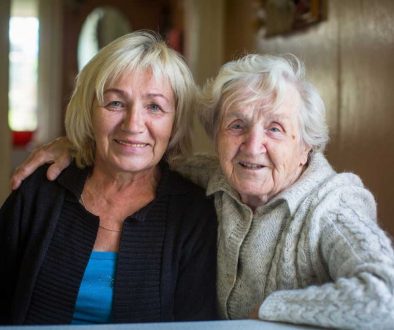Top 10 Misconceptions About Hospice Care [Infographic]
Hospice kills people.
People die faster in hospice.
Hospice is only for those who have cancer.
There’s a good chance you’ve heard someone say this. Or perhaps you’ve thought one of these statements might be, at least a little bit, true.
They’re not.
These are just a few of the top misconceptions about hospice care. Sometimes myths are harmless. When it comes to hospice, they are anything but.
When people believe these myths, it keeps them, or those they love, from getting the help they need.
Help that can reduce pain and suffering. Provide counseling and emotional support. And improve the quality of life for the patient and their families.
For example, hospice is not just for those with cancer. It also helps those who have different illnesses, such as heart disease or ALS. Both of which require a great deal of end-of-life care.
At Hospice Wise, we want to set the record straight. Get the facts out. So we can ultimately improve the lives of those needing hospice and their loved ones.
We’ll examine some of the most common misunderstandings. And lay out the facts that can help you make wise decisions.
Someone receiving hospice care often lives longer than expected once they enter hospice. With a higher quality of life!

1. Does Hospice Kill People?
There is a common misconception that hospice kills people. Or, that people will die faster if they are in hospice care.
This is just not true. Far from it.
Hospice doesn’t speed up or slow down death. It simply allows the disease to take its natural course, while improving the quality of life for the person suffering from the terminal illness.
In fact, hospice provides a wide variety of care and services, both medical and otherwise. So someone receiving hospice care often lives longer than expected once they enter hospice. With a higher quality of life!
The focus of hospice is to provide relief from pain, manage symptoms and offer compassionate care. But it’s important to realize that the goal is NOT to cure the patients of their life-limiting illnesses.
So while people die in hospice, it is due to their illnesses, not to the of care they receive.
2. Do You Die Fast in Hospice?
You are eligible for hospice care when you have a life expectancy of six months or less.
But many people do not receive hospice care as early as they could in the course of their illnesses.
As a result, they are in hospice for a shorter amount of time. This can give the false impression that they die faster in hospice. Or that hospice kills people.
Hospice does not kill people. Hospice does not make people die faster.
As we stated above in #1, the opposite is true. Hospice often allows people to live longer than they would otherwise.
3. Hospice is Only for Those Who Have Cancer
Hospice often helps people who have a life-limiting cancer diagnosis. But those aren’t the only people hospice helps.
Anyone with a serious, life-limiting illness and less than six months to live can use hospice services. Hospice care is frequently used for those with a number of diseases, including:
- Strokes
- Renal (kidney) failure
- ALS (Lou Gehrig’s disease)
- Heart failure
- AIDS
- Alzheimer’s disease
- Dementia
- Parkinson’s disease
- End-stage lung disease
4. Hospice is Where You Go to Die
Hospice is not actually a place. It’s a type of care philosophy. And can be provided at a variety of locations, including in the home.
Hospice provides comfort, symptom relief, and support for those who are dying.
The type of care provided and how it is received often determine the location.
Those who are receiving hospice care may be in an inpatient setting like a hospital, or at a private home.
The goal of hospice is to provide dignified, compassionate care for those facing end-of-life illnesses. Regardless of where they are.
5. Hospice Care Ends When the Patent Dies
Did you know that hospice cares for the entire family?
Children, parents, and other loved ones can get bereavement and grief counseling services through hospice. Sometimes special programs and camps are provided for children who have lost parents or siblings.
Check with your individual hospice to determine the full scope of services that are available. These services vary by hospice, but most offer some type of bereavement counseling and support groups.
If you need help getting connected with a hospice near you, we can help.
Children, parents, and other loved ones can get bereavement and grief counseling services through hospice. Sometimes special programs and camps are provided for children who have lost parents or siblings.
6. Hospice Sedates Patients So They Sleep All the Time
Also not true.
Hospice provides relief for symptoms. In some cases, this may involve sedation to help with pain or discomfort. But not all patients need this type of care.
In fact, for some people, the opposite is true.
Hospice can reduce pain for many patients, and improve their emotional well-being. These patients are often able to do more of the activities they once enjoyed before they started hospice care.
These activities may include gardening and other hobbies, reading, puzzles, and even taking short trips.
7. If You Are In Hospice, You Can’t See Your Regular Doctor
If you are in hospice care, your personal physician can be a part of the hospice care team.
You do not have to give up your regular doctor. In many cases, your personal doctor will work closely with a hospice doctor.
Hospice doctors have received additional, extensive training in how to provide care for patients with serious, life-limiting illnesses.
8. You Have to Sign a Do Not Resuscitate Order (DNR) to Qualify for Hospice
While many hospice patients do have a DNR order, there is no requirement to have one in order to receive hospice care.
Hospices allow patients to make their own decisions about whether or not a DNR is appropriate for their individual situation.
Hospices do not force or impose their treatment plans upon anyone.
9. All Hospices Are the Same
While thousands of hospices adhere to the values of providing quality end-of-life care, there are some differences between them. Some of the differences include:
- Hospices may be for-profit or nonprofit.
- Some are based within a community.
- They may serve several states or cities from one centralized location.
- Some hospices are independent, while others are a part of a hospital or health care system.
Most hospices participate in Medicare. If they do, they are legally required to meet the requirements outlined by the government.
10. Hospice Care is Expensive
Hospice care isn’t free. But it’s not true that it will cost you a lot of money out-of-pocket.
For many people, medicare will cover the cost of hospice. Some insurance plans also help cover hospice and related services.
And for those who can’t afford hospice care, with or without additional help, non-profits are willing and able to provide services with little or no cost to the patient.
If money is a concern, you can learn more in our article Who Pays For Hospice?
Still Not Sure if Something is True?
Just because you’ve heard something through the grapevine, or read something online doesn’t mean it’s necessarily true.
Check out the other articles on this site for more vital information hospice care. Here are the answers to the top hospice questions most people have.
Help Us Help You!
Have a question you can’t find an answer to? Simply type it in to the search bar. If we don’t have an answer, we’ll be notified so we can get one.
In the meantime, be sure to subscribe to our email list so you can stay informed. You’ll get high-quality, factual information delivered right to your inbox.












